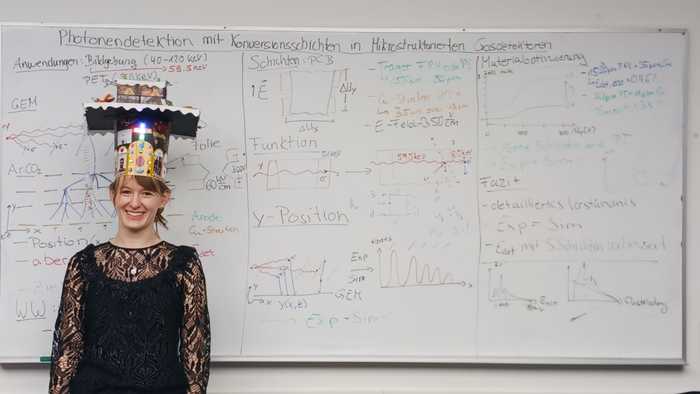Katrin Penski's Successful PhD Defense
We congratulate Katrin for her successful thesis defense!
14.11.2024

We congratulate Katrin Penski for successfully passing her PhD exam on November 14th 2024.
Katrin worked on improving the detection efficiency of photons using Micro-Pattern Gaseous Detectors (MPGDs). MPGDs are already widely used in collider experiments for detecting charged particles due to their excellent spatial resolution and scalability to large dimensions. However, for uncharged particles the detection efficiency is low. Katrin's approach to increase the detection efficiency was to introduce solid converter layers into the gas volume for the primary photon conversion. Produced photoelectrons are then detected via the underlying MPGD, which was in the case of Katrin a triple GEM detector.
A first step to increase the photon conversion efficiency were material studies, to find suitable materials that have a large photon interaction cross-section, a high extraction probability of the photelectron from the material, and allow for application of an electric guiding field for the photoelectrons. Studies have been carried out for different thicknesses of copper as conversion material and FR4 or Polyimid as insulating carrier material. Katrin showed that the photon detection efficiency compared to pure gaseous detectors could be increased by a factor of 2 by using only 5 converter layers.
However, experimental and simulation studies have shown that the path from incoming photon to detected electron is more complex. The initial photoelectron created in the converter layer is immediately stopped and the electron that is detected originates from a recombination photon emitted by the ionised atom of the converter layer, interacting in the operating gas. Understanding this effect was crucial to describe the processes inside the detector.
With this Katrin has set the basis for photon sensitive MPGDs for our working group, and especially the extensive and complete simulation studies she performed are often the starting point for many studies also for other detector experiments.

